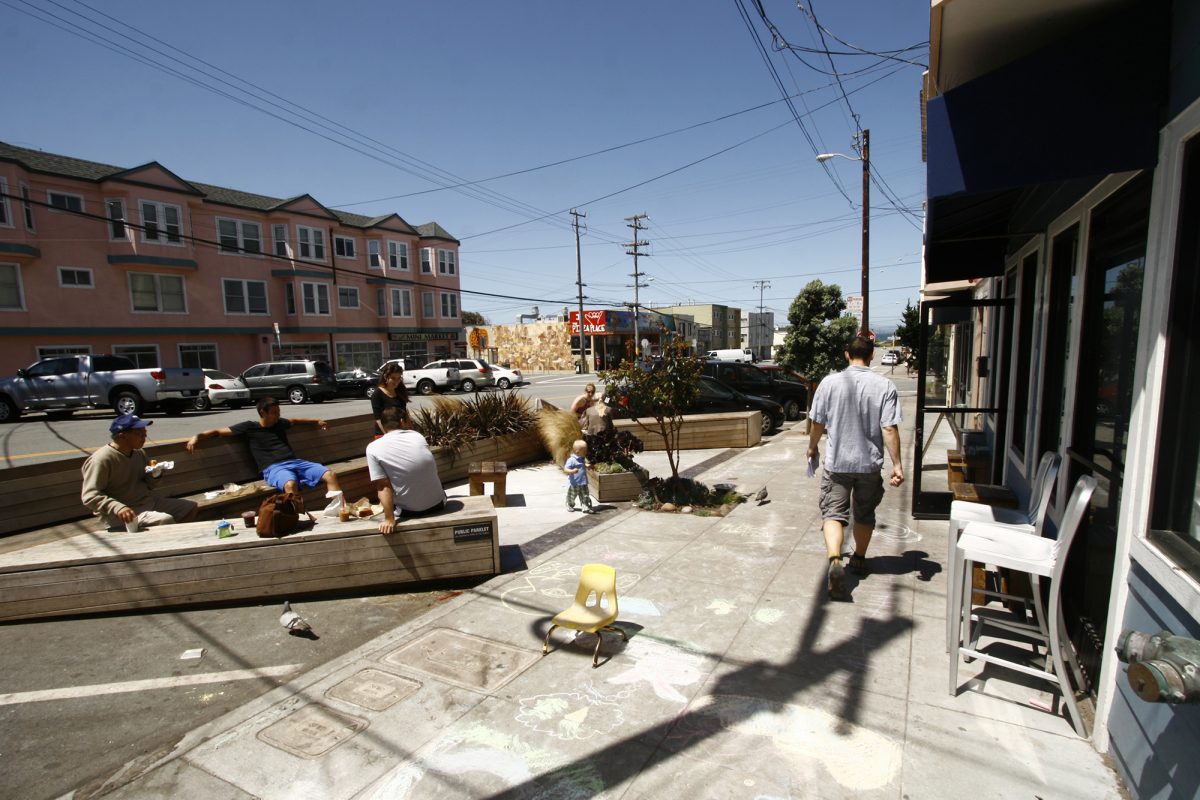Parklet Power

As councils across Australia strive to enhance their liveability, sustainability and competitiveness, parklets are proving popular. A poll of the 300-plus citizens gathered for the inaugural Perth City Summit in August found that parklets are the street activation people would most like to see. Why are parklets so desirable?
San Francisco is central to the parklet story. In 2005, the design collective Rebar turned a parking space into a ‘park’ for two hours as a comment on the use and control of public space in the city. This was followed in 2006 by the installation of more than 40 temporary ‘parks’ for PARK(ing) Day, now an annual, international event. By 2010, San Francisco had introduced a policy to facilitate the installation of parklets, and this has been an important precedent for parklet policies in Australia and internationally.
There are more than 50 parklets across San Francisco. According to the City and County of San Francisco’s Pavements to Parks program, they have “appeared … under the sponsorship of nonprofits, small businesses, neighborhood groups, and others”. There is a strong sense of democracy and accessibility in this account: anyone can install a parklet in their city and, apparently, many do. The Deepistan National Parklet (aka ‘the Deeplet’), the parklet installed by Deep Jawa outside his home in the Mission District, is a celebrated example.
We hear much less about the businesses behind parklets. Cafes, bakeries, bars and pizza shops have installed almost all of the 50-plus parklets in San Francisco. Deepistan is exceptional not merely for its topiary dinosaur, but for its non-commercial nature. This is not surprising, since the proponent pays for installation and maintenance, and the costs are significant (typically well over $20,000).
While the term ‘parklet’ was coined in San Francisco (by City planner Andres Power, as a catchier name for the ‘walklet’ proposed by Rebar), there are many other precedents – most obviously, perhaps, given the strong connection between parklets and cafes, the longstanding use of footpaths and roadways by restaurants as dining areas. The parklet outside Vans cafe in Cottesloe, for example, was approved under an Alfresco Dining Licence. Converting a parking space into a sitting space is hardly revolutionary.
Yet advocates of parklets rarely make this connection. The story of parklets as new and novel, stemming from Rebar’s DIY park, is far more appealing, suggesting a bottom-up, creative and democratic remaking of the public realm. The link to one of the world’s most innovation-rich cities doesn’t hurt, either.
The reluctance to connect parklets to business by planners and policymakers reflects concerns about the commercialisation and commodification of the city. The problems of privately owned public spaces (‘POPOs’ – provided by large developers in exchange for variations to planning rules) are well documented, particularly the issues around high levels of management and surveillance.

Parklets, however, are not POPOs. Parklets are installed on public land, they are temporary and they cannot be controlled by the business that installed them. Each bears a sign proclaiming the public nature of the space. Parklets can be used by anyone, regardless of whether they purchase anything.
One might critique parklets for their scale, their distribution or their use. They are tiny, and do very little to address important needs for play, exercise or engagement with nature. Some appear a little neglected; many are located in areas that are already leafy. In San Francisco, where consultation processes prior to the approval of parklets are extensive, parklets have been rejected for fear they will contribute not to community empowerment but to gentrification.
So how can we explain the popularity of the parklet? Perhaps because parklets support, and build off, the kinds of places people like – and these aren’t just green spaces.
As US urban activist and writer Jane Jacobs explained so powerfully, cities need more than parks and plazas: commercial activity is a crucial component of public life. Cafes are increasingly important sites for community interaction as other places for local exchange continue to disappear, including banks, post offices, corner delis and newsagents, on top of the local hardware, haberdashery and other specialist shops that have failed in competition against larger retailers and the digital marketplace. Parklets present some hope for walkable, local commerce.
Or, perhaps it has more to do with the lack of options for public participation in shaping the city. Parklets may be led by businesses, but they are local businesses, sometimes supported with public or crowdsourced funds, and parklet policies mean that the spaces cannot be private. Opportunities for participation are often much greater than for the larger-scale public spaces created by professionals. They also show vividly how much space we waste on private cars.
After parklets, the second most desired street activation, according to the Perth City Summit poll, was ‘creative installations’, then street events, then murals. Compared to these, parklets present a more tangible and accessible option. Clearly, we can’t rely on businesses alone to provide adequate and appropriate public spaces – there remains an important role for local and state governments to provide a high-quality public realm. But parklets show that businesses are not all seeking to play the system. As we think about public life, might parklets provide a useful typology on which to build?
This is the latest in a series of articles we’re sharing from issue 4 of Future West (Australian Urbanism). Future West is a print publication produced by the University of Western Australia’s Faculty of Architecture, Landscape and Visual Arts. Future West looks towards the future of urbanism, taking Perth and Western Australia as its reference point.


